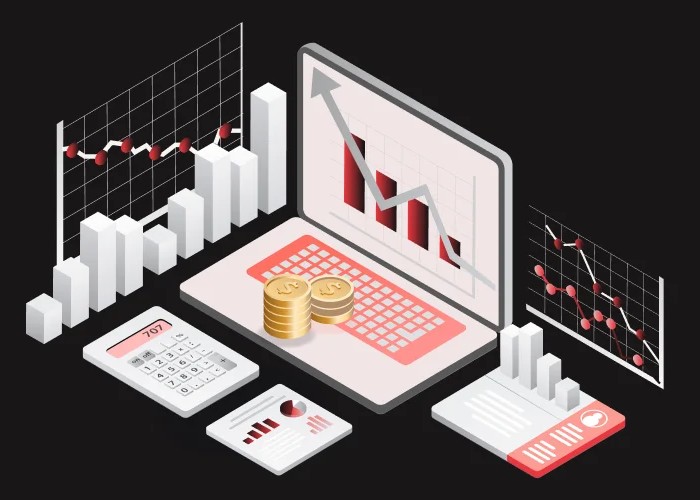
In today’s fast-paced business environment, it is essential for companies to have effective financial management systems in place. One of the key components of a robust financial management system is accounting software. Accounting software helps businesses track their income and expenditures, manage financial records, and generate reports for analysis and decision-making. While there are ready-made accounting software solutions available in the market, many businesses opt to create their own custom accounting software to meet their unique needs and requirements.
Challenges the Accounting Software Solves
Accounting software addresses several key challenges faced by businesses in managing their finances. One of the main benefits of accounting software is the time and effort it saves. By automating various financial processes, accounting software reduces the need for manual calculations and data entry, freeing up valuable time for accountants and financial professionals. Additionally, accounting software enables faster data processing, allowing businesses to access important financial information in real-time. This ensures that decision-makers have up-to-date and accurate data to inform their actions.
Another significant advantage of accounting software is its ability to prevent human errors. Unlike manual calculations, which are prone to mistakes, accounting software performs calculations and processes operations with precision. This eliminates the risk of errors in financial records and ensures the accuracy of financial reports. Furthermore, accounting software improves efficiency by centralizing and organizing large volumes of financial data. This allows accountants to access and analyze information quickly, making financial management more streamlined and effective.
Accounting Software Types
Before embarking on the journey to create accounting software, businesses must consider the different types of accounting software available and choose the one that best suits their needs. The following are the main types of accounting software:
Spreadsheets
Spreadsheets, such as Microsoft Excel and Google Spreadsheets, are the simplest form of accounting software. They provide a basic tabular structure for accountants to input data and perform calculations. Spreadsheets are suitable for managing simple financial tasks but may not be sufficient for the needs of medium and large-sized businesses.
Commercial Software
Commercial accounting software is designed for small and medium-sized businesses. These off-the-shelf solutions offer a range of features to perform accounting tasks, such as tax reporting, auditing, and compliance management. Examples of commercial software include Sage Business Cloud Accounting (formerly Peachtree).
Software for Enterprises
Large enterprises often require customized accounting software to handle their complex financial operations. Enterprise accounting software serves as an Enterprise Resource Planning (ERP) solution, offering advanced planning features, workflow optimization, integration with other financial systems, and more.
Personal Accounting Software
Personal accounting software is aimed at individuals who want to manage their personal finances effectively. It helps with budgeting, bill tracking, retirement planning, and other personal financial management tasks.
Steps to Create Accounting Software
To create custom accounting software for your business, you need to follow a systematic approach. Here are the key steps involved in the development process:
Step 1: Define Your Requirements
Start by identifying your specific accounting needs and requirements. Consider factors such as the size of your business, the complexity of your financial operations, and any industry-specific regulations that need to be adhered to. This will help you determine the features and functionalities your accounting software should have.
Step 2: Design the User Interface
The user interface (UI) design is crucial for ensuring that your accounting software is user-friendly and intuitive. Work with experienced UI designers to create a visually appealing and easy-to-navigate interface that aligns with your brand identity.
Step 3: Develop the Backend
The backend development involves creating the core functionalities of your accounting software. This includes data processing, calculations, financial reporting, and database management. Choose a programming language and framework that best suits your requirements.
Step 4: Implement Security Measures
Security is of utmost importance when it comes to accounting software. Implement robust security measures to protect sensitive financial data from unauthorized access or breaches. This may include encryption, multi-factor authentication, and regular security audits.
Step 5: Test and Debug
Thoroughly test your accounting software to identify any bugs or glitches. Conduct both functional and user acceptance testing to ensure that the software meets your requirements and is easy to use.
Step 6: Deploy and Train Users
Once your accounting software is ready, deploy it in your business environment. Provide comprehensive training to users to ensure they can effectively utilize the software and maximize its benefits.
Step 7: Provide Ongoing Support and Maintenance
Continuously monitor and maintain your accounting software to ensure its smooth operation. Address any issues or bugs promptly and provide ongoing support to users. Regularly update the software to incorporate new features and address changing business needs.
MVP Features
When developing accounting software, it is essential to prioritize the minimum viable product (MVP) features. The MVP should include the core functionalities necessary for basic financial management. Here are some key features to consider for your accounting software MVP:
- General Ledger: The ability to record and track all financial transactions in a centralized ledger.
- Accounts Payable and Receivable: Managing and tracking payments to suppliers and from customers.
- Financial Reporting: Generating financial statements, such as balance sheets, income statements, and cash flow statements.
- Bank Reconciliation: Matching and reconciling bank statements with internal financial records.
- Expense Management: Tracking and categorizing business expenses for accurate financial reporting.
- Budgeting and Forecasting: Creating budgets and forecasts to plan and analyze financial performance.
- Tax Management: Automating tax calculations and generating tax reports for compliance purposes.
- Audit Trail: Maintaining a detailed log of all financial transactions for audit and regulatory purposes.
These features form the foundation of an effective accounting software solution, allowing businesses to manage their finances efficiently.
Security Comes First
Security is a critical aspect of accounting software development. Financial data is highly sensitive, and any unauthorized access or breaches can have severe consequences. When creating accounting software, it is essential to implement robust security measures. Here are some key security considerations:
- Data Encryption: Encrypt financial data to ensure its confidentiality and integrity.
- Access Control: Implement strict access controls to restrict user access based on roles and permissions.
- Multi-factor Authentication: Require multiple authentication factors, such as passwords and biometrics, to enhance security.
- Regular Security Audits: Conduct regular security audits to identify vulnerabilities and address them promptly.
- Compliance with Regulations: Ensure that your accounting software complies with industry-specific regulations, such as the General Data Protection Regulation (GDPR) or the Sarbanes-Oxley Act (SOX).
By prioritizing security during the development process, you can build trust with your users and protect their financial information.
Development Cost
The cost of developing custom accounting software can vary depending on several factors, including the complexity of the project, the number of features required, and the development team’s experience. It is essential to consider both the upfront development cost and the ongoing maintenance and support costs. Working with an experienced development team can help you estimate the cost accurately and ensure a successful project within your budget.
Conclusion
Creating custom accounting software can provide businesses with a tailored solution to effectively manage their finances. By following a systematic development process, prioritizing security, and including essential features, businesses can ensure the success of their accounting software project. With the right development team, businesses can create accounting software that meets their unique needs and helps streamline financial operations.
Whether you choose to build accounting software from scratch or customize an existing solution, investing in a robust financial management system is crucial for long-term success. With the right software in place, businesses can gain valuable insights into their financial performance, make informed decisions, and achieve their financial goals.






